Kibera Public Space Project
"Co-creating infrastructure for resilient, thriving neighborhoods"
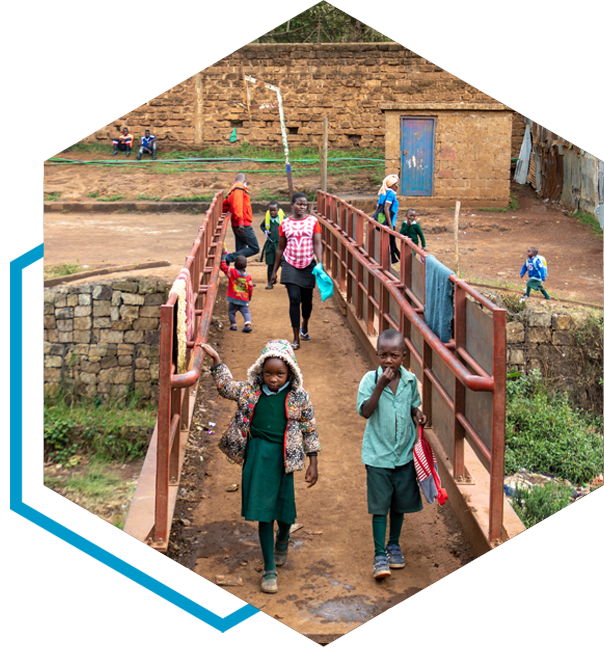
Location
Nairobi, Kenya
THE PROBLEM
Poor drainage and sanitation infrastructure, and precarious housing make the residents of Kibera, one of the world’s largest informal settlements, vulnerable to extreme flooding.
The Big Idea
Develop a network of community-designed and managed public spaces where flood protection and green and grey infrastructure are layered with core services and amenities.
Life Changing Impact
Significantly improved service access and flood protection for over 125,000 residents, benefiting women and young people in particular.
Ripple Effect
Influencing the uptake of new climate, water and sanitation initiatives across Nairobi, and inspired a new approach to upgrading informal settlements that prioritizes community-level knowledge and perspectives.
Kounkuey Design Initiative (KDI) is improving quality of life in one of the world’s largest informal settlements through the Kibera Public Space Project, a network of community-managed public spaces that reduce flood risk while providing access to core services and creating new business opportunities. Each space created by KDI is designed to meet the specific needs of residents and combines river remediation and sustainable drainage infrastructure with community buildings, space for small businesses and recreation, and sanitation and laundry facilities.
Located in the center of Nairobi and home to over 300,000 people, Kibera has long been a neighborhood of interest for both national and international development efforts. While Kibera experiences many issues common to urban informal settlements, such as precarious housing, political conflict and limited public space, its position along the Ngong River and poor drainage and sanitation infrastructure make it highly vulnerable to flooding as well.
Recognizing the challenges faced in Kibera, as well as the need for a new model of development, KDI began working with the New Nairobi Dam Community Group in 2006 to co-design their first public space in the neighborhood. The name Kounkuey means “to get to know something intimately” and embodies the organization’s deeply participatory approach to working with the community. In contrast to the “raze and replace” model traditionally used to build infrastructure in informal settlements across the world, KDI’s model combines access to drainage, sewerage and public space without removing existing housing by remediating polluted land and clearing dumpsites.
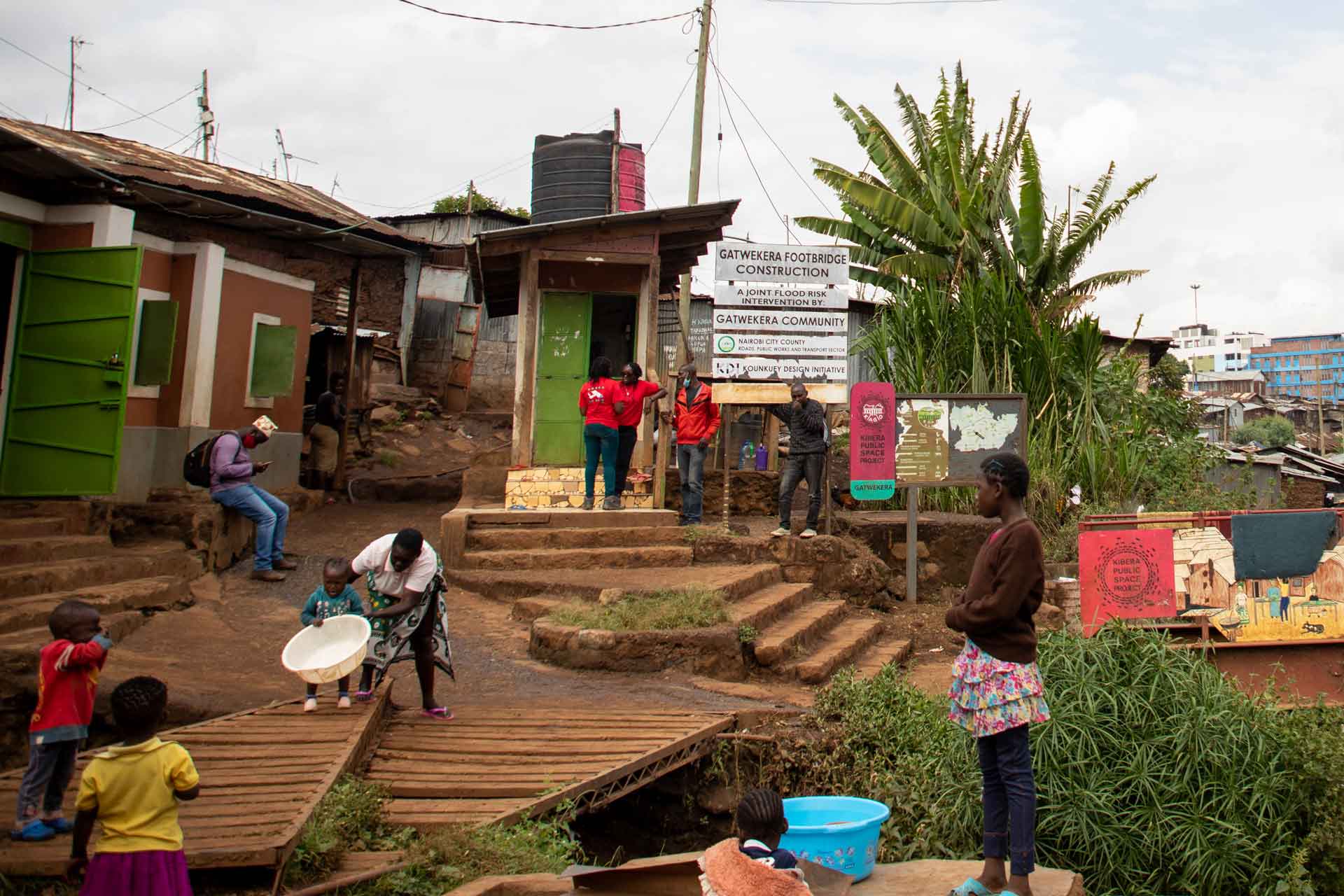
Given the Kibera residents’ long and often contentious relationship with the government – residents do not own the land they live on in many cases, and some have been forcibly evicted – building trust with local residents has been critical. In 2011, KDI began using a request for proposal process to establish transparent partnerships with community-based organizations. Together, KDI and at least one community-based organization determine the most pressing needs of residents in an area and design a new public space together. Every KDI site integrates multiple key services through multifunctional buildings and amenities. For instance, the community hall in one site serves as a gathering space, school and place of worship, but is designed so that its rooftop captures rainwater, reducing flood risk and irrigating a connected greenhouse. KDI also centers the voices of women and children in the design process to create solutions such as adjacent laundry pads and play areas, which allow mothers to balance housework and childcare.
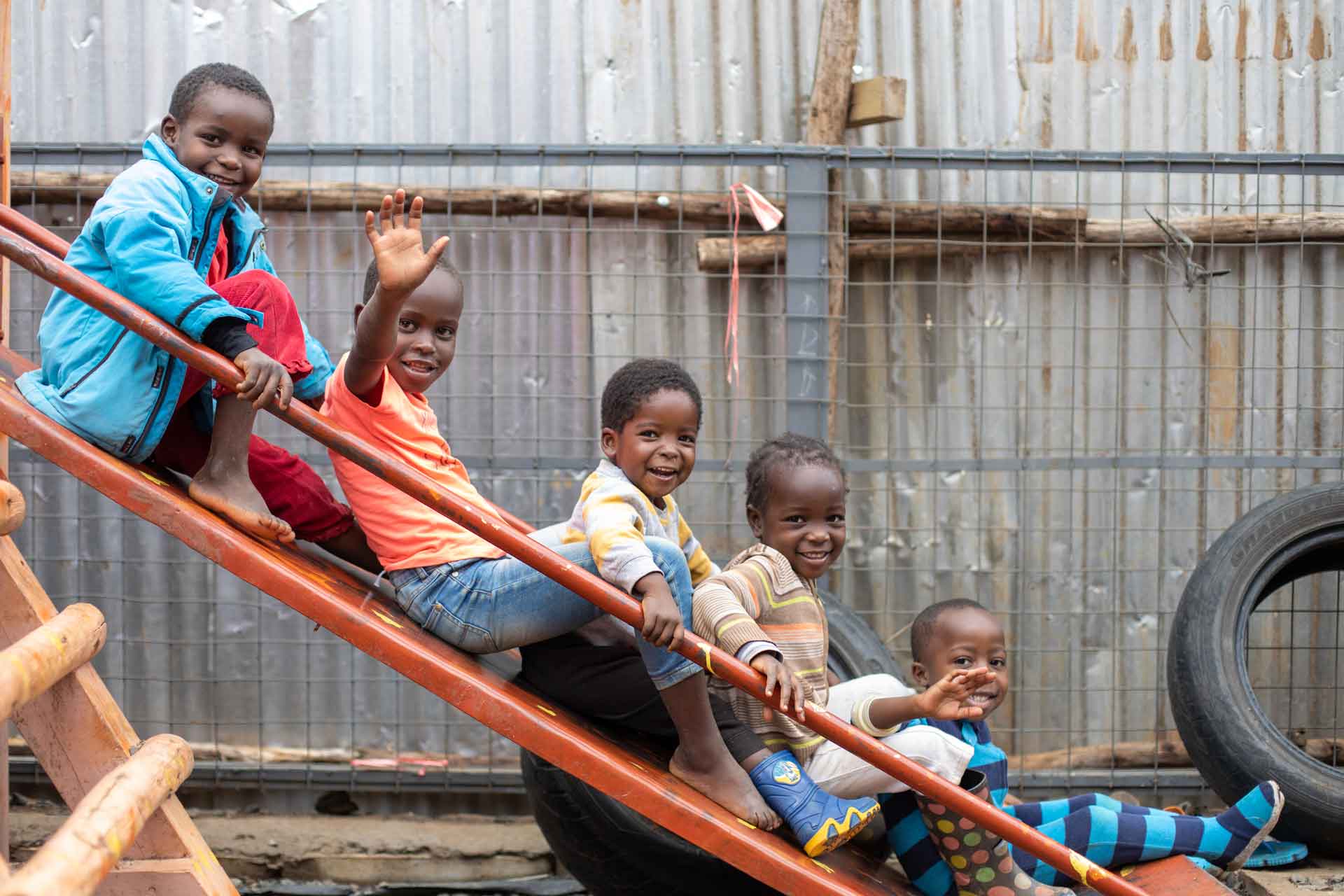
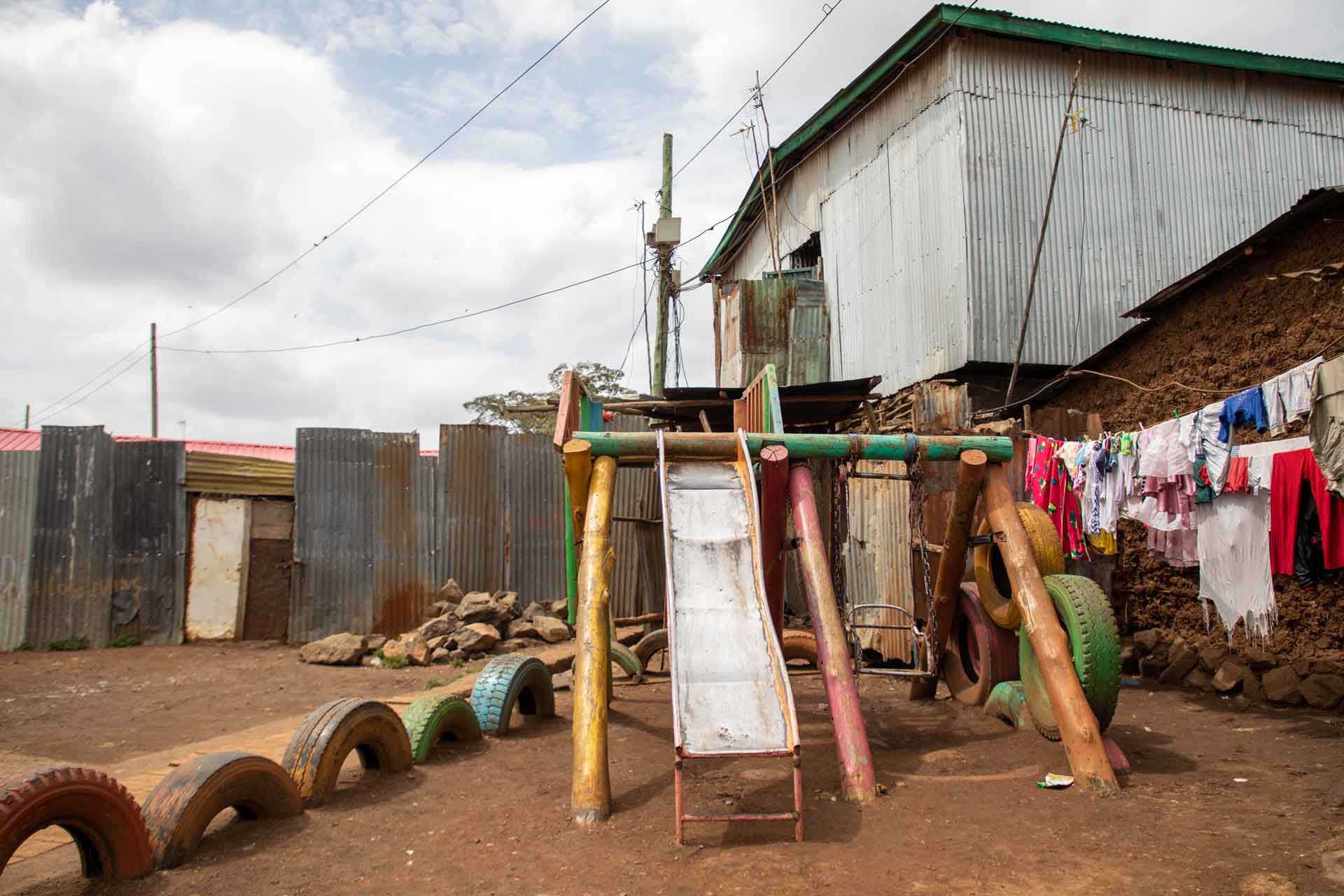
KDI provides technical and financial capacity, analyzing sites and determining what type of infrastructure can be installed. The community-based organizations share responsibility for construction and management of sites. This model allows residents to build capacity as well as establish ownership of their new resource. KDI also provides training for local residents to open small businesses and run income-generating programs at each site, helping to ensure that the public spaces are self-sustaining and vibrant community hubs, and providing a new source of livelihood for many of the neighborhood’s young adults who typically face high unemployment rates.
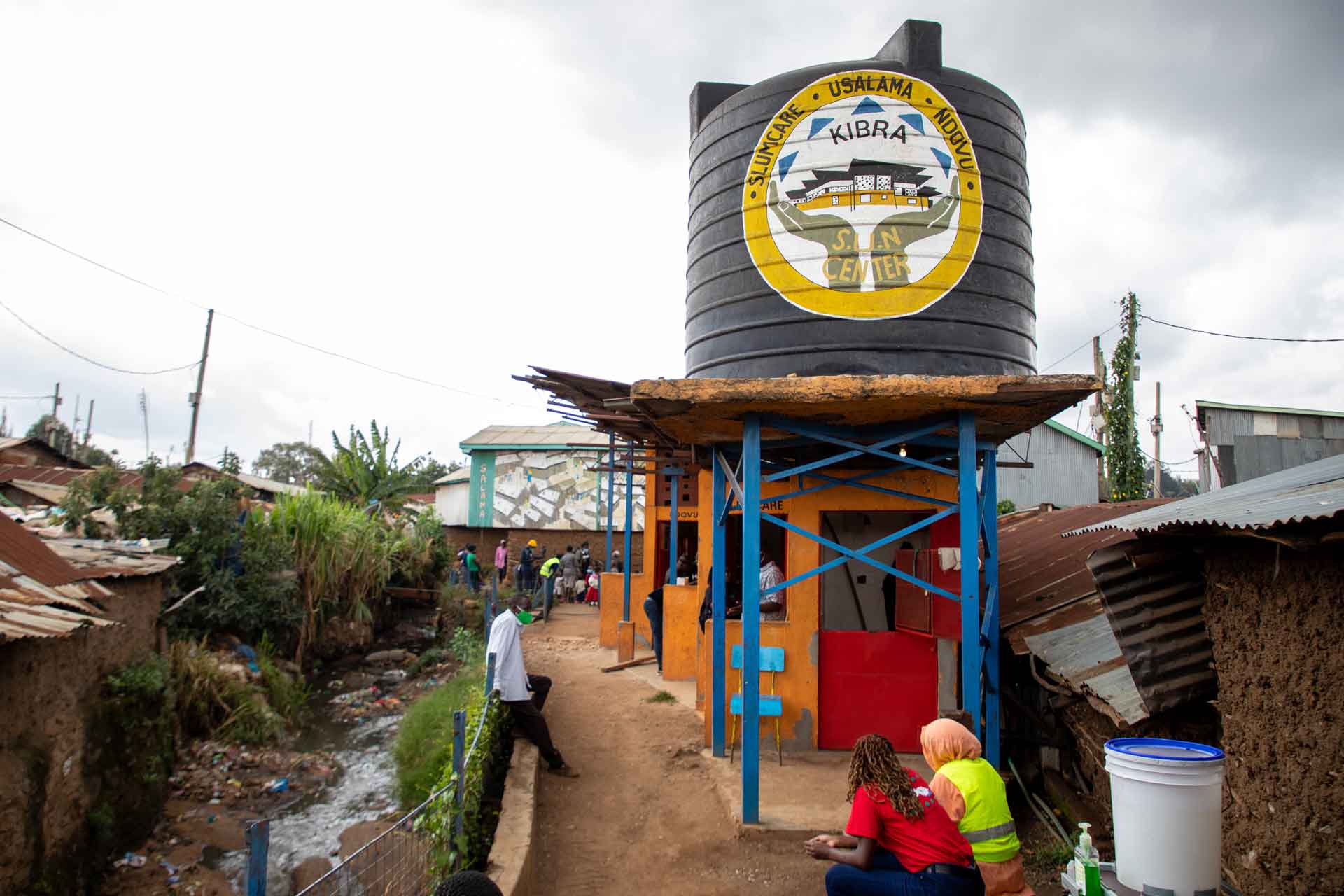
Since the first KDI site was opened in 2010, the organization has built 10 additional public spaces with community partners. The project’s deep network of community expertise and leadership brings flexibility and resilience. In 2015, for example, when a new municipal sewer line was being installed, one fully built and operational site had to be almost entirely taken down by the community to make way. However, other community-based organizations were able to negotiate connecting the line to their KDI sites, gaining access to formal sewerage in two additional locations across Kibera. These connections, as well as the toilet blocks installed in other sites, reduce sewerage going into the Ngong River, a main source of pollution in Nairobi’s watershed.
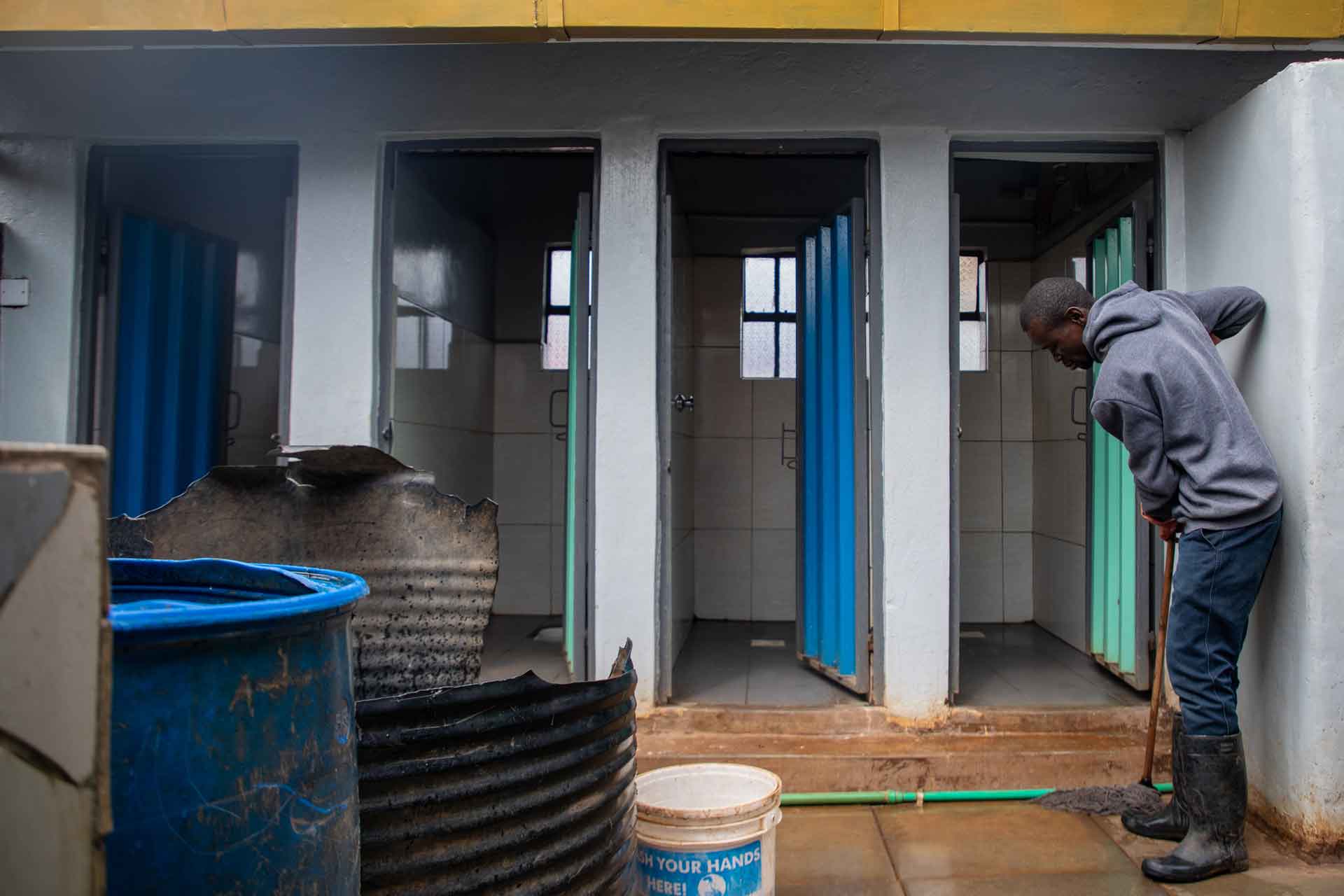
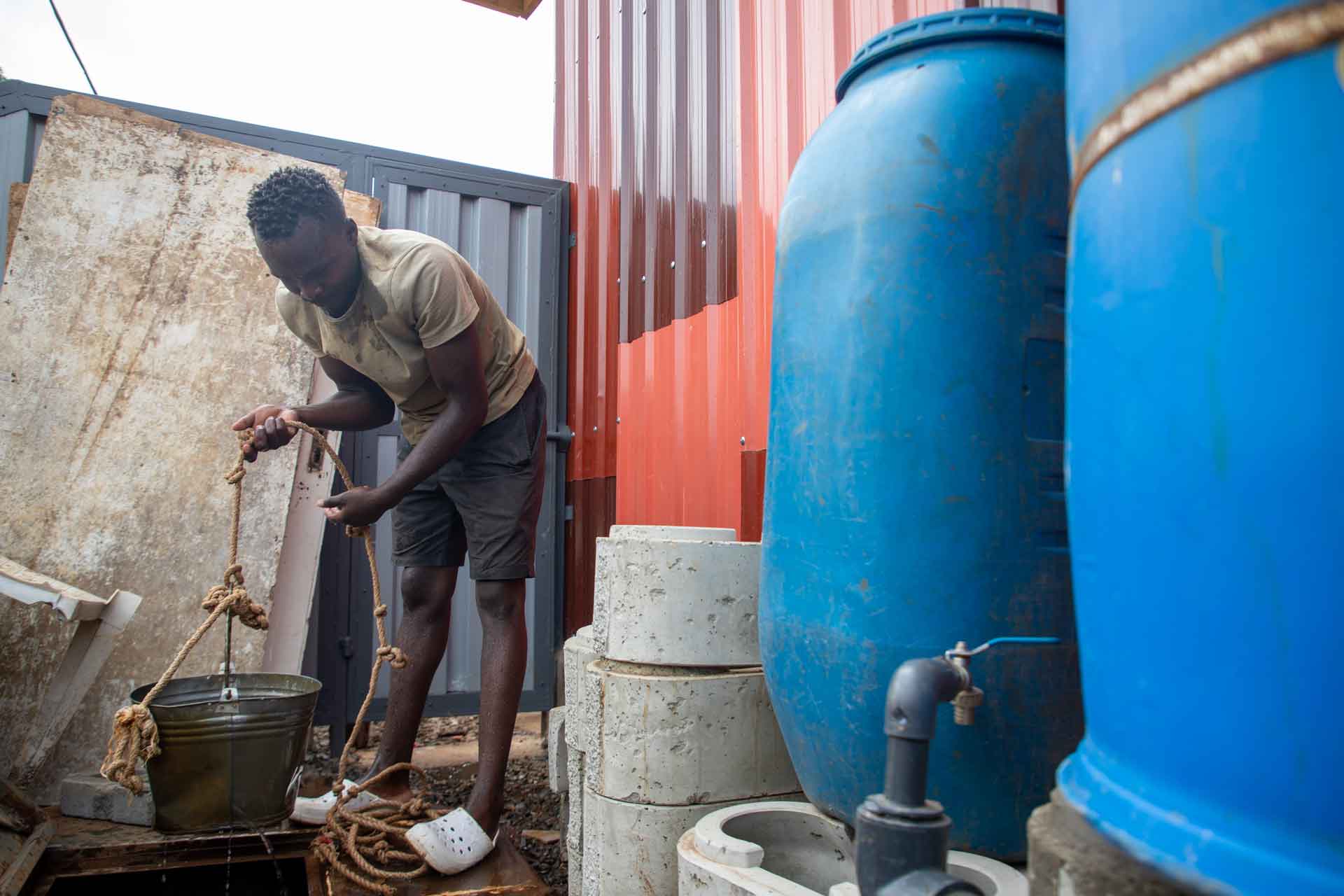
KDI has gained trust and a reputation for delivery that they leveraged in negotiations with the local and national government, helping to connect the knowledge and insights of informal residents to official policymaking processes. In 2016, KDI signed a memorandum of understanding with the County Department of Public Works to address flood risks in hotspots along the Ngong River using data from nearly 1,000 households and community groups. In 2018, KDI began working with the Kenya Meteorological Department to make climate and weather information more accessible to residents of Kibera as well as other informal settlements in Nairobi.
After two years of lobbying by KDI and Slum/Shack Dwellers International, the Nairobi Metropolitan Services approved the Kibera Special Planning Area in 2020, creating a formal opportunity to reshape the city’s approach to development and better incorporate the perspectives of residents.
By The Numbers
11 new climate-resilient public spaces
35% of all purpose-built
public space in Kibera
5,000+ residents involved in design
520 meters of flood protection installed
840 meters of drainage infrastructure installed
Network services 10,000 people/day

